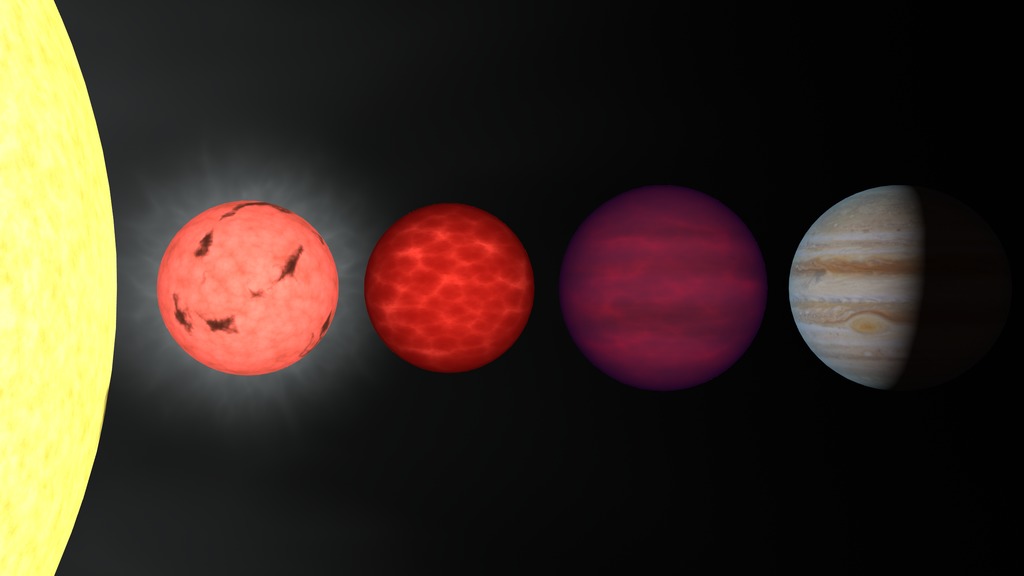
Credit: NASA/IPAC/R. Hurt (SSC)
Artwork • July 1st, 2003 • sig00_star_planet_seq_vis
sig00_star_planet_seq_vis
This figure shows an artist's rendition comparing brown dwarfs to stars and planets. All objects are plotted to the same scale. On the far left is the limb of the Sun. To its right is shown a very low mass star (a so-called "late-M dwarf"), a couple of brown dwarfs (a hotter "L dwarf" and a cooler "T dwarf"), and the planet Jupiter. These objects have masses ranging from 1050 times that of Jupiter (for the Sun) through 75, 65, 30, and 1 Jupiter mass for the late-M dwarf, L dwarf, T dwarf, and Jupiter, respectively. The colors of the brown dwarfs are chosen to match an age of 1 billion years. Despite the range in mass, all four of the low-mass objects are approximately the same size, ten times smaller than the diameter of the Sun. The visible-light sequence shows how these objects might appear to the human eye: the M and L dwarfs are red, while the T dwarf is dimly magenta, due to lack of light -- actually absorptions by sodium and potassium atoms -- in the green portion of the spectrum.
About the Object
- Name
- Sun • Jupiter
- Type
- Star > Spectral Type > M
- Star > Spectral Type > L
- Star > Spectral Type > T
- Star > Type > Brown Dwarf
- Star > Evolutionary Stage > Main Sequence
- Star > Spectral Type > G
- Planet > Type > Gas Giant



